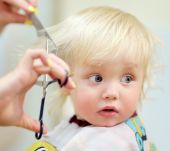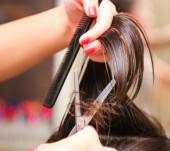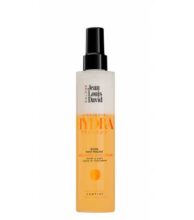
Porous hair: what's the best way to care for it?
Blow-outs after blow-drying, unruly tangle-prone locks, course hair: there are no two ways about it, your hair is porous. You need a big-hitting treatment to get your hair back into tip-top condition fast!
Wash your hair gently
Hair becomes porous when its cuticles, which form a protective barrier around it, are lifted up so much that they absorb moisture but do not retain it. Conversely, non-porous hair has cuticles which are firmly closed. To wash hair that’s distressed like this, go for a mild hydrating shampoo which cleanses without aggravating your locks, even with daily use.
Choose an appropriate hair mask
To deeply regenerate your very dry and brittle locks, you can count on a formulation high in keratin. This protein made by the hair itself is an active ingredient like no other for filling in fissures in the hair fibre. Used as a hair mask, it pampers and boosts the hair fibre instantly.
Smooth down the cuticles by rinsing
Porous hair finds it hard to benefit from the treatments lavished onto it due to its lifted cuticles which allow keratin, water and nutrients to escape again. To resolve this issue, rinse your hair in cider vinegar, whose acidity will smooth down the cuticles, locking moisture in the core of the hair fibre.
Lock in hydration with a film of oil
So as not to ruin all your hard work, use plant oils which restore the hair’s hydrolipidic film and will help your locks benefit from any treatments you apply. They can be used as a leave-in emulsion applied after washing, like Bi-Phase Shine and Soft spray, or as an oil soak for those who have more time to spare.
You would also like...
-
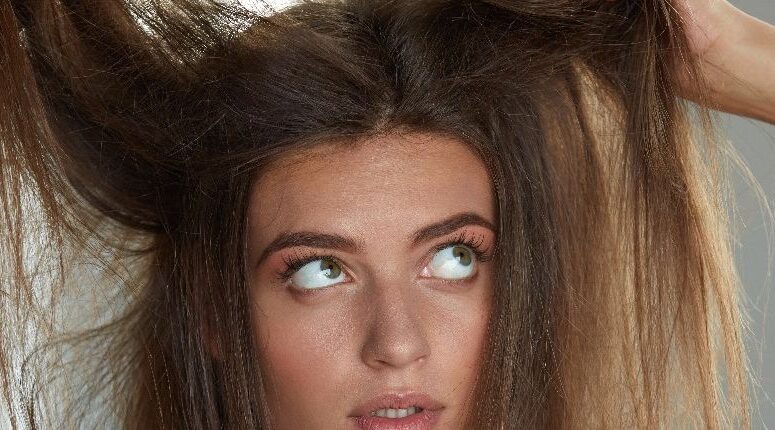 Damaged hair
Ten common misconceptions about dry hair
Is dry hair making your life difficult? To make matters worse, when you try and treat your lacklustre straw-like locks, you are not always given correct advice. To help you tackle the problem, here are…
Damaged hair
Ten common misconceptions about dry hair
Is dry hair making your life difficult? To make matters worse, when you try and treat your lacklustre straw-like locks, you are not always given correct advice. To help you tackle the problem, here are… -
 Damaged hair
What is your hair type?
Lacklustre locks, excess sebum, dry tips. To treat your locks with a targeted haircare regime, the first step is to determine your hair type. Here are three criteria for a quick assessment. First criteria: The…
Damaged hair
What is your hair type?
Lacklustre locks, excess sebum, dry tips. To treat your locks with a targeted haircare regime, the first step is to determine your hair type. Here are three criteria for a quick assessment. First criteria: The… -
 Damaged hair
Wearing headphones: what effects does it have on your hair?
Music lovers take note: your trusty music accessory is not without risks for your locks. What are the hair issues that you may encounter when you wear headphones, and what should you do to avoid…
Damaged hair
Wearing headphones: what effects does it have on your hair?
Music lovers take note: your trusty music accessory is not without risks for your locks. What are the hair issues that you may encounter when you wear headphones, and what should you do to avoid… -
 Damaged hair
Split ends: persistent preconceived ideas
Dry, damaged tips: you think you know everything about split ends but these strands split in two have created some stubborn preconceived ideas. We take a closer look. 1. Split ends can be repaired with…
Damaged hair
Split ends: persistent preconceived ideas
Dry, damaged tips: you think you know everything about split ends but these strands split in two have created some stubborn preconceived ideas. We take a closer look. 1. Split ends can be repaired with…
Not to be missed
-
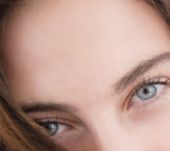 Damaged hair Hair: how to prepare for seasonal hair loss
Damaged hair Hair: how to prepare for seasonal hair loss -
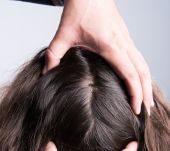 Damaged hair Dry scalp: consequences and solutions
Damaged hair Dry scalp: consequences and solutions -
 Damaged hair What are the no-poo and low-poo trends?
Damaged hair What are the no-poo and low-poo trends? -
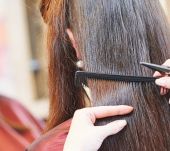

 France
France
 Spain
Spain
 Italy
Italy
 Polska
Polska
 Portugal
Portugal
 Mexico
Mexico
![[EN] Jean Louis David [EN] Jean Louis David](https://www.jeanlouisdavid.us/app/themes/jld/dist/images/svg/logo-jean-louis-david.svg)

